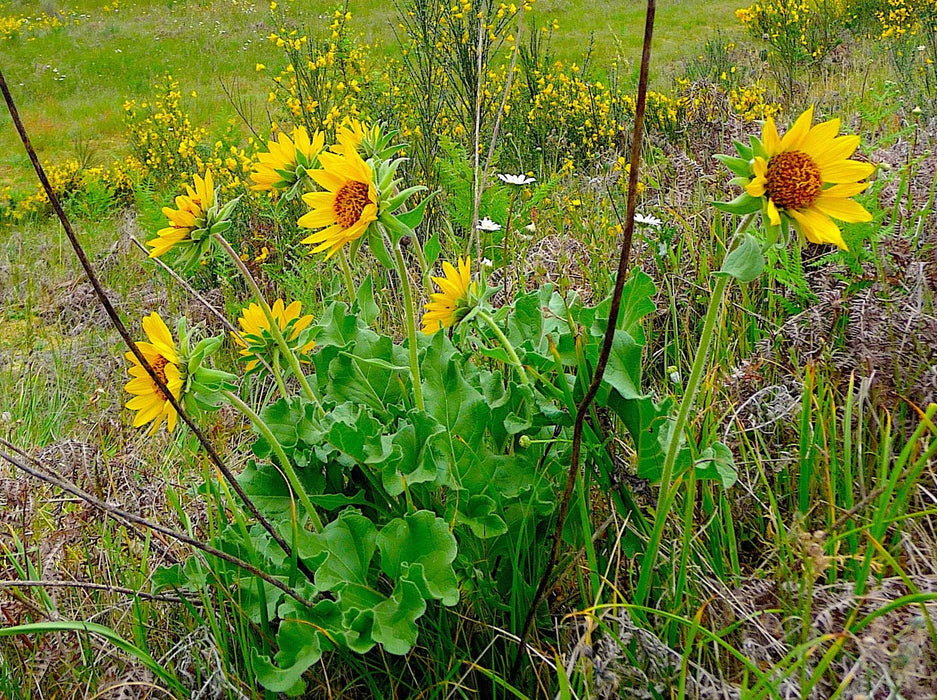
Puget Balsamroot Seeds (Balsamorhiza deltoidea)
An extremely showy plant!
Much like its relative arrowleaf balsamroot (Balsamorhiza sagittata), Puget balsamroot forms clumps of thick, rough-textured, wavy arrow-shaped leaves that grow low to the ground. These clumps produce sunflower-like stalks of bold, yellow blossoms, typically about two-feet in height.
(Note that arrowleaf balsamroot occurs across most of the inland west -- while this plant in contrast is more limited to West Coast prairies - occurring from southern British Columbia to central California in mountains and grassy mountain foothills).
Strongly tap-rooted is something of an understatement with this plant, which, as it ages, produces something like a virtual underground tree trunk of a root – thick, woody, many feet in length. This attribute allows the plant to find deep pockets of water, and to survive in harsh, sunny, rocky locations for a century or more.
The seeds of Puget balsamroot are edible and can be ground into meal, but most are quickly enjoyed by finches and other seed-feeding birds. It is also deer resistant, and one of the finest butterfly nectar plants within its natural range.
Starting Puget balsamroot from seed can be a slow process. Plants take a number of years to mature before flowering, but it is worth the wait. This is an exceptional ornamental plant for sunny locations. Plant with broadleaf lupine or common camas for a brilliant color contrast.
Approximately 50 to 100 seeds (1.0 grams).
